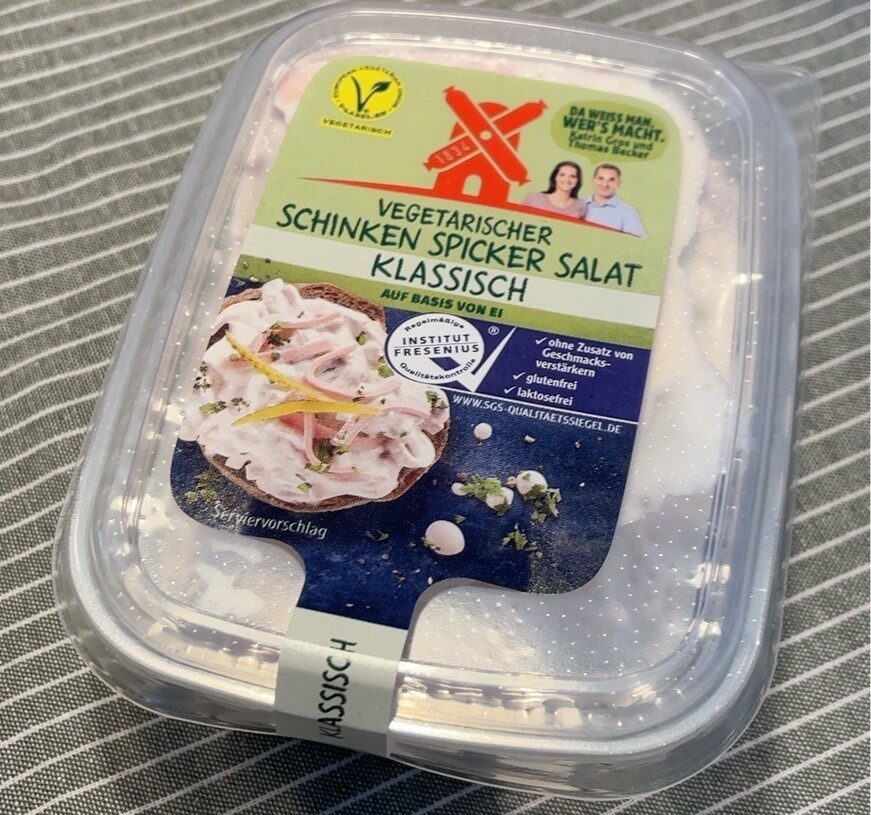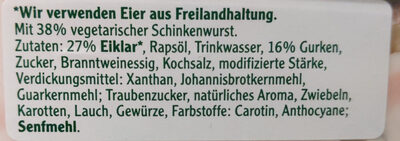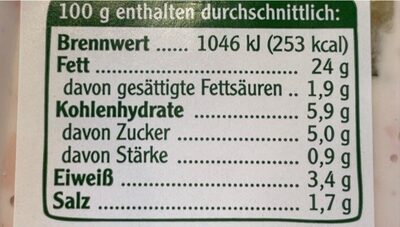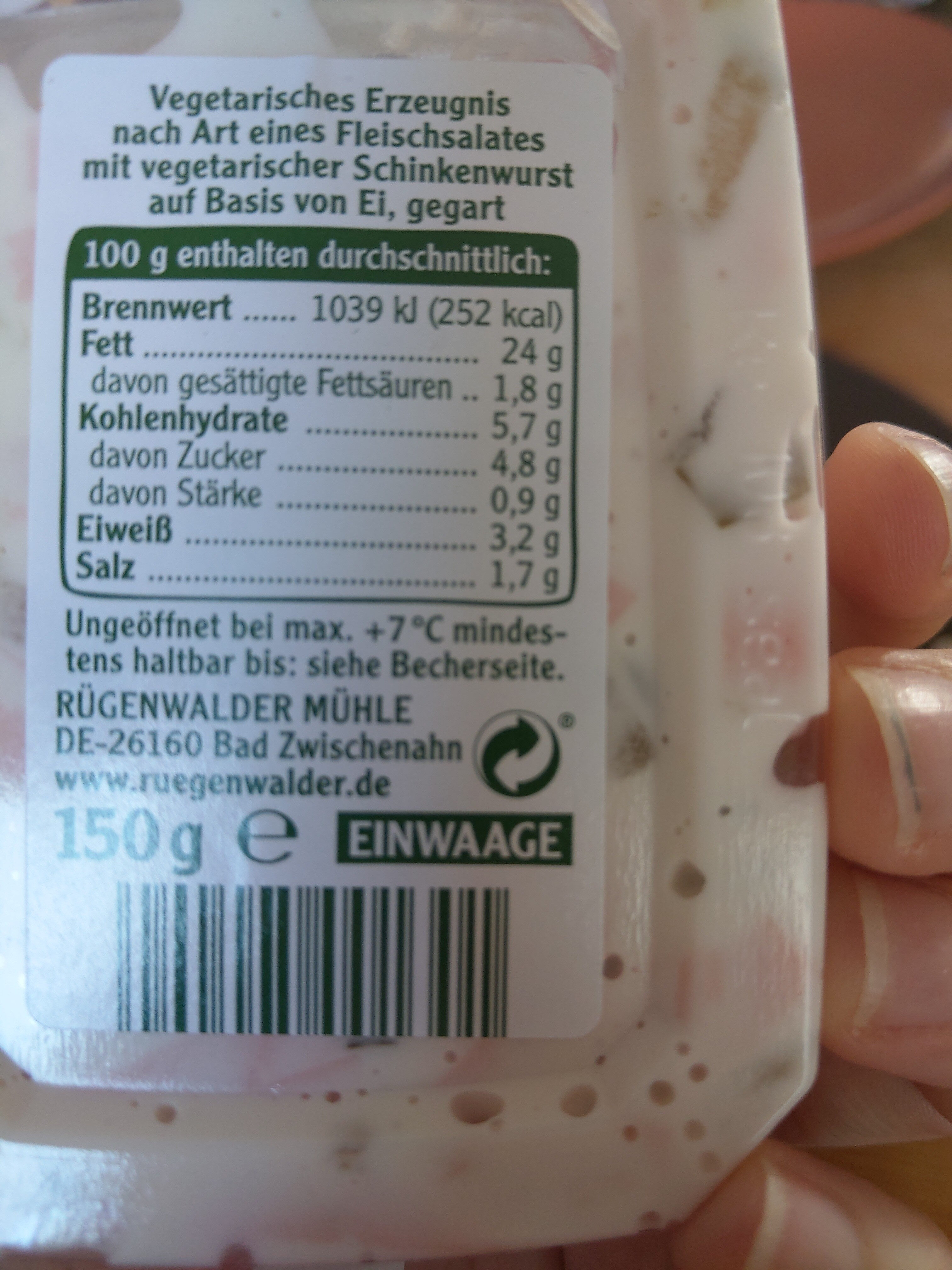Vegetarischer Schinken Spicker Salat - Rügenwalder Mühle - 150 g
This product page is not complete. You can help to complete it by editing it and adding more data from the photos we have, or by taking more photos using the app for Android or iPhone/iPad. Thank you!
×
Barcode: 4000405001301 (EAN / EAN-13)
Common name: Vegetarisches Erzeugnis nach Art eines Fleischsalates mit vegetarischer Schinkenwurst auf Basis von Ei, gegart
Quantity: 150 g
Packaging: Plastic
Brands: Rügenwalder Mühle
Categories: Plant-based foods and beverages, Plant-based foods, Spreads, Meals, Plant-based spreads, Salted spreads, Meat alternatives, Prepared salads, Meat analogues, Vegetarian spreads with meat-like pieces
Labels, certifications, awards:
No gluten, Vegetarian, European Vegetarian Union, European Vegetarian Union Vegetarian, Institut Fresenius, de:Ohne-zusatz-von-geschmacksverstärkern

Manufacturing or processing places: Bad Zwischenahn
Link to the product page on the official site of the producer: https://www.ruegenwalder.de/produkte/veg...
Countries where sold: Germany
Matching with your preferences
Report a problem
Data sources
Product added on by anticultist
Last edit of product page on by fabi2.
Product page also edited by date-limite-app, freddii, inf, itsjustruby, kiliweb, kommx, moon-rabbit, openfoodfacts-contributors, packbot, raphael0202, roboto-app, tacite-mass-editor, wurzel3, yuka.UlA5UU5Qb2Y5OXMwbXM4RitCN1A5OTU2MlpXNVlEcTdEZlFRSVE9PQ, yuka.sY2b0xO6T85zoF3NwEKvlhEYa9PluQnPBRbSuX_Um_KvKIH4Ostpwo7CY6s, yuka.sY2b0xO6T85zoF3NwEKvll0bcMTDhAKVCC7khHCO5c62P7bnaO0s5a-lHqs, yuka.sY2b0xO6T85zoF3NwEKvllN3dd3enj3kLAfSuVSh4tu3d6bDbNNYvJKqL6s, yuka.sY2b0xO6T85zoF3NwEKvlmVbUcvl8z7ZEUH4u3Ob2MfQDqCzZPBiwbLVKqs, yuka.sY2b0xO6T85zoF3NwEKvlnVIQYDHgAreZhDvhnKkyt6jHMS2MfBwxpLwNKs, yuka.sY2b0xO6T85zoF3NwEKvlndHWeTvnzLLbhnWx0alzOmcJ5v1ecMq_5qmCKs.












